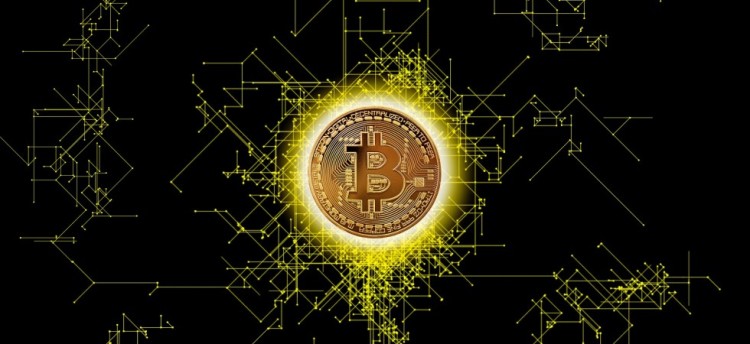
(This post originally appeared as part of the SF Blockchain Week conference)
Anyone who remembers the 90’s internet boom knows what a massive technology hype cycle looks like. Then, as now, there will be good and bad ideas in tech. Blockchain technologies are bound to improve our lives in the 21st century, but we should clear a few misconceptions towards understanding them better.
1. It is not anti-bank.
“Chancellor on brink of second bailout for banks” was the pointed message recorded in the genesis block of Bitcoin – the first blockchain to achieve scale. While partially to provide proof of the date (January 3, 2009), the political message behind this move was taken by many to mean opposition to banks. This is simply not true. Bitcoin, and blockchain tech in general is meant to provide an alternative to central banks, not entirely replacing global banking infrastructure. While the promise of crypto today is primarily to provide sound money, banks will continue to do much more than payments in the global economy. We will still need loans, credit instruments, and other financial services, perhaps done more efficiently on blockchain. Banks will, however, need to significantly evolve and adapt to this new technology and consumer expectations it will bring. Filling out 400 pages of forms and waiting “five to ten business days” for a home loan to approve, will be met with blank stares and/or laughter.
2. Economics Over Tech
Cryptography, peer-to-peer systems, proof-of-work, even blockchain as a data structure, have all individually been around for decades – that’s not what’s new or interesting. The magic is the unique combination of these in creating strong economic incentives and producing decentralized consensus – the core idea behind blockchain tech. In proof-of-work systems, there are several constituents (e.g. users, miners, developers) who have strong economic motivation to work together. Users want sound money and interesting use cases built, miners want block rewards in crypto, and developers want to see their contributions achieve scale. Most of the unknowns and complex area of research in blockchain are, in fact, in economics, from game theory in change governance, to token economics in monetization.
3. Payments are a Small Part of the Potential
Payments remain the killer app for blockchain, but that’s only scratching the surface. Almost anything that can be digitized, and has clear benefits from decentralized consensus, will eventually find itself on blockchain. This is the true potential of a service economy – tokenized digital assets that can be reliably owned and traded seamlessly, with value exchange built right in. In plain terms, imagine being able to buy a movie ticket with the option to skip previews (or only the previews if that’s your thing), or automatically selling it to someone else if your GPS indicates you are running late. Or using IoT sensors in self-driving cars to negotiate right of way with other cars automatically, making micro-payments to skip ahead if you are running late to an interview and want to cut through traffic. Global trade is worth 50 trillion dollars today, representing a majority of World GDP, and blockchain can apply a step function to it.
4. It’s On the Same Level as the Internet
Blockchain technologies are not built on top of the consumer internet we know necessarily – they instead construct a parallel network of value. Blockchains such as Bitcoin make no assumption about communication mechanisms used to broadcast transactions or how various nodes on the network talk to each other. If the Internet is available, great, but imagine making payments for essential goods in a disaster struck area that may not have such infrastructure ready. You could send crypto transactions over ad hoc networks created from smartphones over Bluetooth. Self-driving cars in the example above could send micro-payments directly to each other, without inefficiently going through a carrier cell tower a mile away and then back to the car behind them. Beyond the network topology, we should regard blockchain not as a successor to the internet, but a technology at the same level, except focused on value exchange. We built great content and applications for the consumer internet, and will need to re-imagine things of value worthy of blockchain.
5. Blockchain Is Under-Hyped
I know, I know, hear me out. It is easy to feel inundated by DApps, ICOs, new consensus algorithms, and what not launching on a daily basis. However, in drawing comparison with how the Internet evolved, it is quite possible that we are witnessing only the use cases that seem within reach – the equivalents of email and IRC. Haven’t seen the World Wide Web level scenarios yet, with profound consequences on our social and economic lives.
As legendary venture capital John Doerr remarked in a 1995 interview in context of his investment in Netscape, many people viewed the Internet through the lens of what they knew and understood (e.g. TV networks, print magazines) and missed the leaps of imaginations necessary to evaluate the technology’s true potential (every person on this planet can be an instant publisher, Twitter, Youtube, mobile computing).
Let’s keep an open mind about the potential of blockchain technologies, while not suspending critical thinking. Two plus two will never equal five – don’t let anyone tell you otherwise. But, at the same time, is a failure of imagination hindering your understanding of what could be possible with blockchain? Let’s find out together. Let’s build it together.
Ash Sharma is the founder of Friday Night Labs, a new venture focused on building a P2P economy based on Blockchain technologies. A veteran of internet products, with a strong interest in Data Sovereignty, he blogs about blockchain on ash.money
